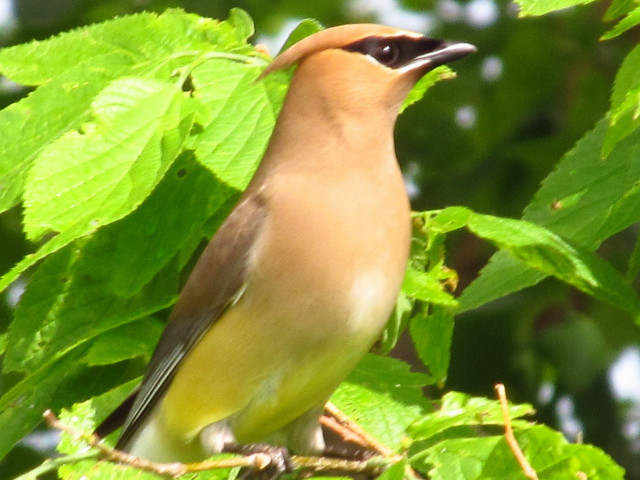Bird watching is a unique hobby because you can explore a specific species or even birds living in one state. But, the most exceptional experience is searching for crested birds.
Do you agree?
Some wild birds stand out because of their bright plumage color, but the most stunning of them all are the ones with bright, beautiful crest feathers.
There are unique crested species across the globe, such as the sulfur-crested cockatoo and the great crested grebe. But, which ones are in North America?
10 Birds With Crests To See In The US
1. Great-Crested Flycatcher
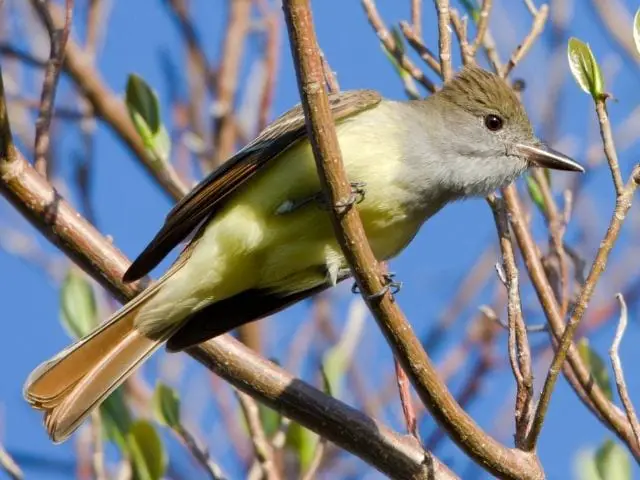
It has a stunning brown feather crown contrasting a gray head and throat, rusty feathers, and a yellow belly.
Fortunately, the US has breeding colonies of the great crested flycatcher though you can only see it in the eastern states. Try the woodlands where it loves hunting from high above, looking for insects below.
You'll also see them in forest edges and golf courses, so you have many places to go birding.
Additionally, the great crested flycatcher is a nest-cavity bird. Therefore, attract it to your bird feeder with a nest box installed up to 20 feet from the ground.
2. Blue Jay
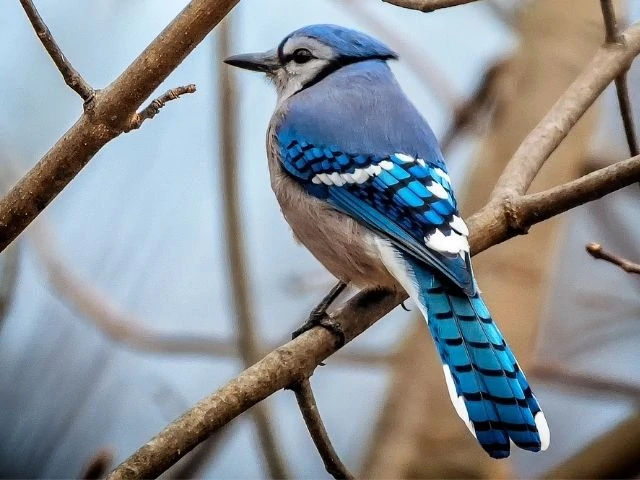
A blue jay's blue crest is unmistakable. Its plumage has blue, white, and black colors. If you miss its blue crest, you won't miss its black necklace.
However, listening for blue jay calls can be misleading because they mimic the red-shouldered hawks.
You're likely to see it in the eastern states any time of the year. But, there's also a nonbreeding population that scarcely inhabits some parts of the northwestern states.
Since it's a backyard bird, you can attract a blue jay to your bird feeder using suet, sunflower seeds, and peanuts. However, it has predatory habits, sometimes eating the eggs of other birds even though it's the size of an American robin, with a body length between 9.8 and 11.8 inches. It also helps to have a birdbath ready for blue jays.
3. Double-Crested Cormorant
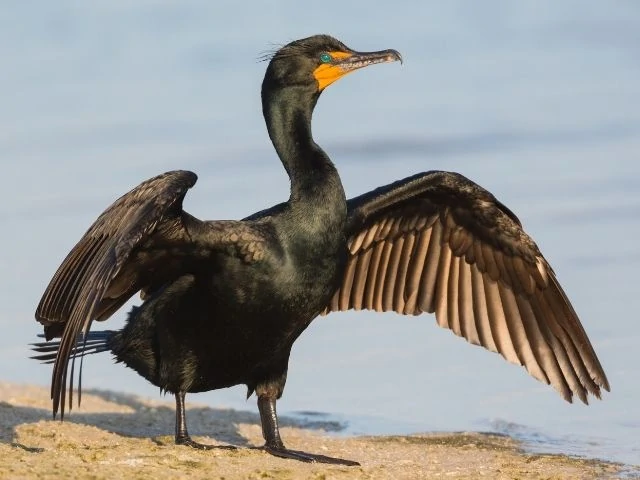
The breeding adult has a small tufted crest of black feathers. It's a waterbird with a long neck, a small head, and a long bill. It's not as big as a goose, but its body length is worth noting as it falls between 27.6 and 35.4 inches.
There's a variety of double-crested cormorants in the US. The resident population is in Florida, the migratory birds occupy the central states, and the breeding cormorant population is in the northern region.
So, you'll always see a double-crested cormorant somewhere in the US. Plus, it doesn't mind living in a colony with wading bird species.
Based on its love for lakes, rivers, and bays, you can tell the double-crested cormorant eats small fish, crabs, and eels. Snakes also show up on the menu.
4. Cedar Waxwing
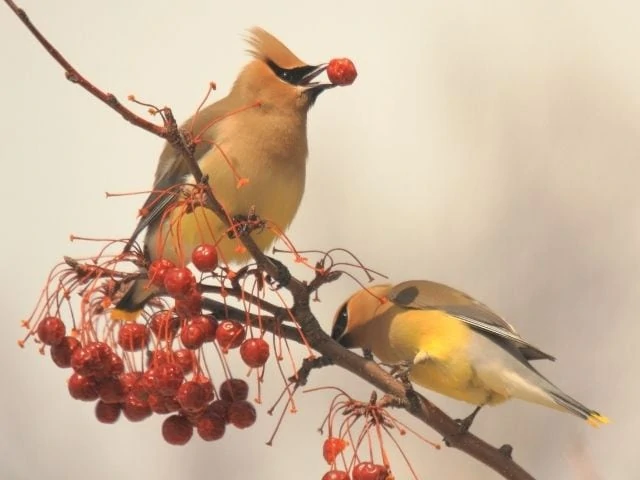
A cedar waxwing is colorful, starting with a pale brown crest brushed backward, yellowish belly, and gray wings with red tips. These tips give it the title waxwing. Further, this bird has a gray tail with a yellow tip.
It's small-ish, ranging in size between a sparrow and a robin as it grows to 6.7 inches long.
You're likely to see a cedar waxwing anywhere in the US as there is a resident population in the northern states and a nonbreeding range southwards. You'll see it in flocks perched on fruit trees, social as always.
The female takes five to six days to build a nest. Sometimes, to save time, these birds prefer to fetch building materials from the nests of American robins or yellow warblers.
5. Tufted Titmouse
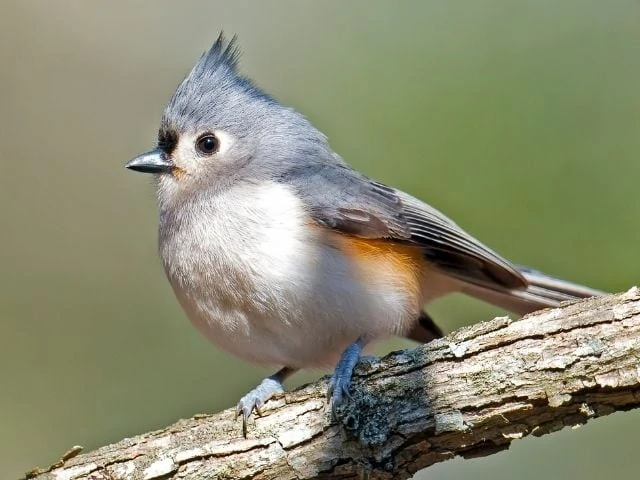
The shape of its crest resembles a cedar waxwing, but instead of brown, a tufted titmouse has a gray crest and a black forehead.
You'll only see it in the eastern states, from east Texas to Florida, North Carolina, Wisconsin, Michigan, and southern Maine. It's not very social as you'll only see pairs unless it's the breeding season.
In backyards, they can live in a nest box and never complain when you're generous with seeds.
Instead of eating and leaving the rest for other birds, they create stores around the feeder, taking one birdseed at a time so they can unshell it before storage.
6. Black Crested Titmouse
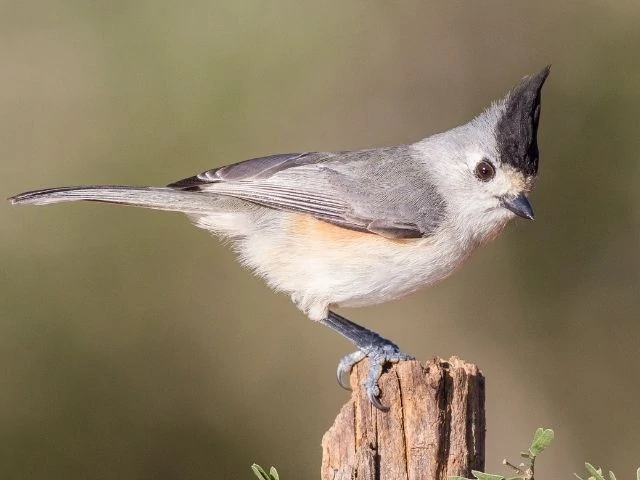
It's a close cousin of the tufted titmouse, even possessing the same plumage colors. But, they live in different regions, the black-crested titmouse inhabiting parts of Texas. Further, the two birds sound different, the tufted making high-pitched fast calls, while the black-crested makes nasal calls.
The black-crested is smaller as it grows to 5.9 inches when a tufted bird can range between 5.5 and 6.3 inches long.
7. Northern Cardinal
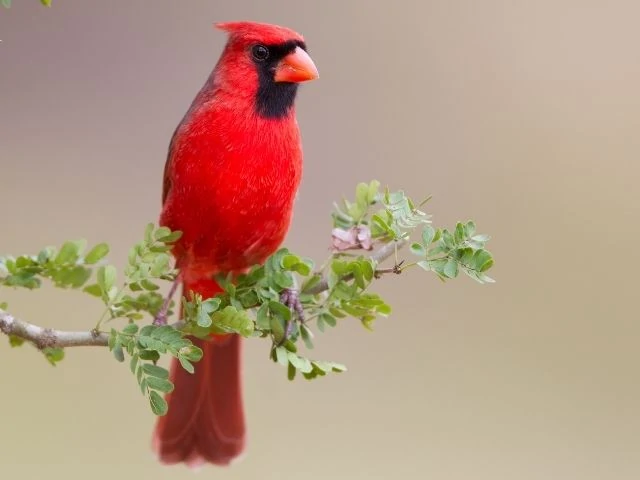
After talking about so many gray and black crests, here's a bright one. A male northern cardinal flaunts a red crest that matches the red plumage on the rest of its body.
However…
A female bird has a red crest and pale brown body plumage. Both sexes have long tails.
In the US, northern cardinals live in the eastern and southern states, perched on shrubs or foraging on the ground. They are 8.3 to 9.1 inches long, smaller than a robin's body length.
8. Crested Caracara
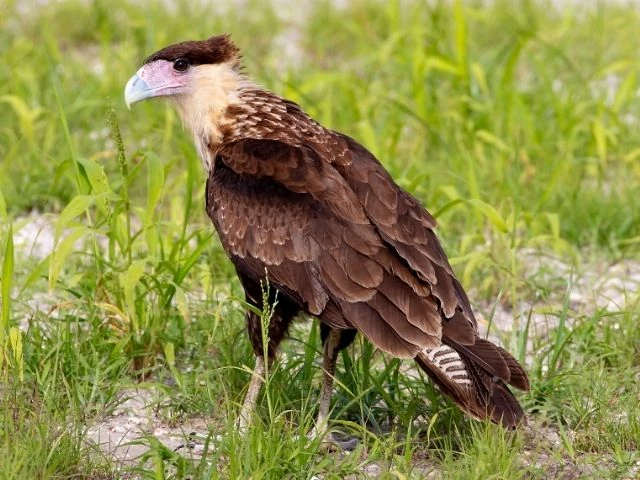
It lives in Central America, a few states in the southern part of the US, and South America.
However, it's already on the list of endangered wild birds in Florida, as the US Fish and Wildlife Service put it there due to extensive habitat loss.
You'll know it by its black cap, white neck, yellow-orange legs, and face. Look for it in its favorite habitat - open country, for it loves to fly low.
Cornell Lab notes that, unlike other falcons, the crested caracara gathers building materials for a nest instead of occupying other species' nests or laying its eggs in some form of nesting spot on the ground.
9. Pileated Woodpecker
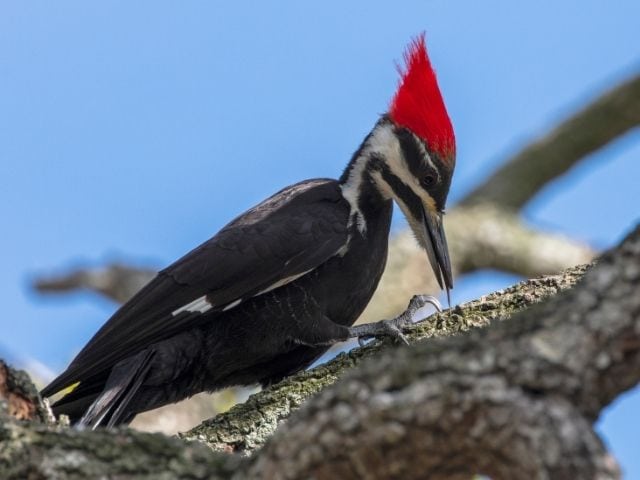
It's one of the most striking woodpeckers for its drumming and iconic plumage. Further, it's the largest woodpecker in North America, growing between 15.8 and 19.3 inches long. That's almost as large as an American crow.
You'll see in the eastern, southeastern, northeastern, and northwestern states of the US.
It's one of the crested birds for its red crest on both sexes.
The female bird has black and white stripes across the face, while the male species has the same pattern but has a red stripe across the cheek.
10. Steller's Jay
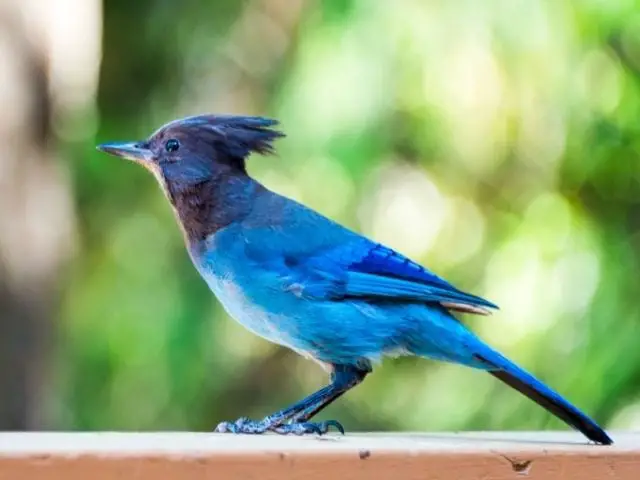
This bird's black crest contrasts the blue plumage on the rest of its body. It's a large bird, somewhere between the size of a robin and a crow, with a body length averaging 11.8 to 13.4 inches.
You'll spot this one in the western region only, from Washington to Nevada, California, Utah, and New Mexico. You'll find stellers jay species in woodlands, coniferous forests, prairies, and shrublands.
Have you spotted any of these birds in your backyard or nearby park?
Frequently Asked Questions
Do All Birds Have Crests?
No, not all of them have crest feathers. Some species with mohawks you can see in the US are in our list above. You'll see them in the wild, depending on the season, as some are migratory. However, there are many species found in other parts of the world.
Some crested species are rare or endangered. For instance, National Geographic lists the grey-crowned crane as endangered, and the Victoria-crowned pigeon is also on the International Union for Conservation of Nature's list of endangered species.
According to Birdlife International, cockatoos are also on the endangered list.
Can You See a Golden Pheasant in the US?
No, you can't and since it's not a native bird, you'll not see it in the wild but you can go birding in Hawaii's parks like Waikamoi Preserve. Its introduction in this park dates back to the 90s.
Here are some things you should know about Golden Pheasants:
Do Crows Have Crests?
No. Crows have short feathers on their crown but they use these to communicate the same way other birds use crests.
Final Thoughts
You can never ignore a bird's crest, no matter how small it looks. Even on small birds like titmice, the extra feathers and colors on crowns are stylish. To us, they are for beauty. To birds, crests help them communicate with other birds.
This feature is in different families and categories of avians, so planning a trip around it means you'll come across woodpeckers, cranes, and grebes. How many have you spotted so far?

